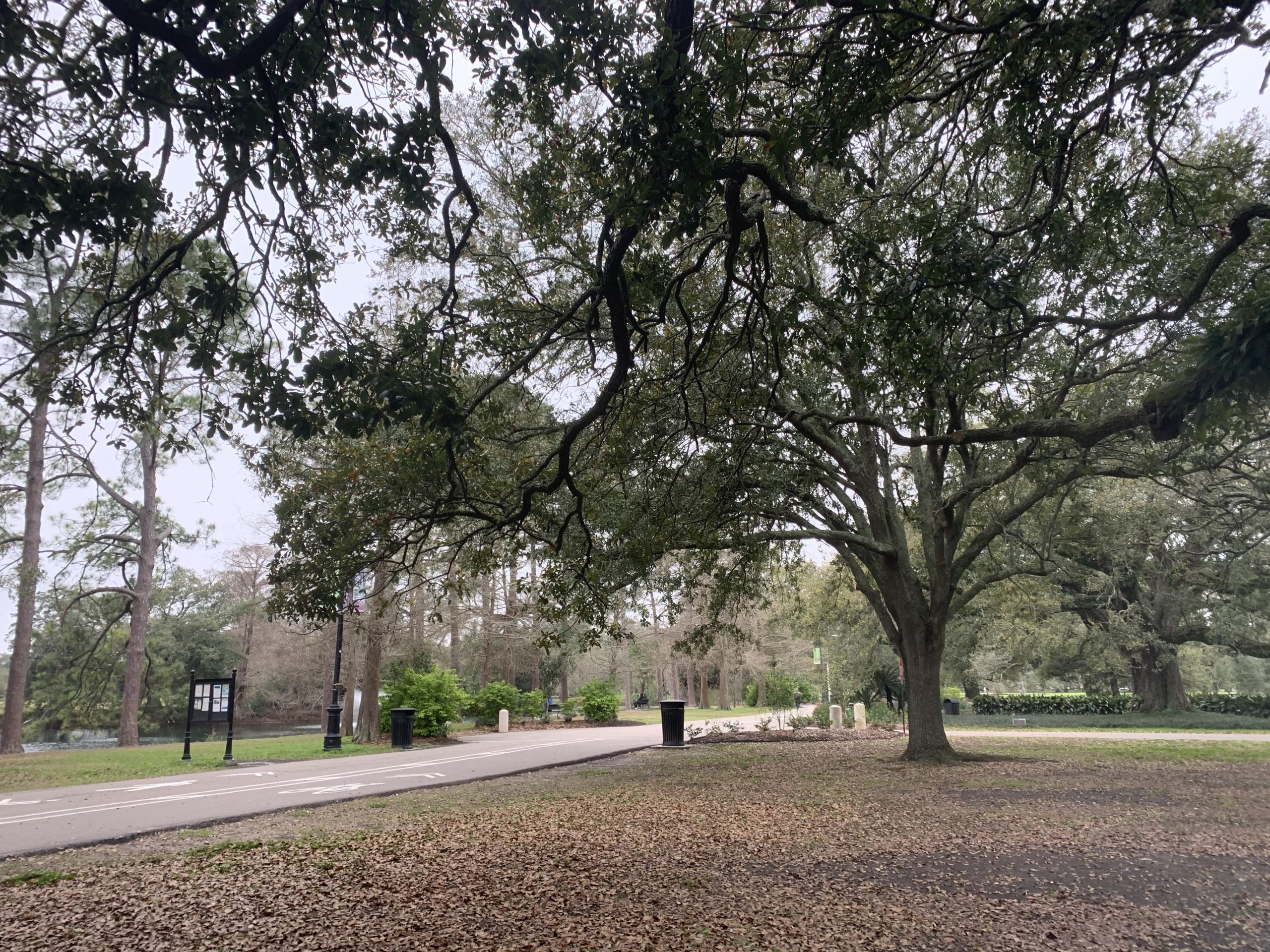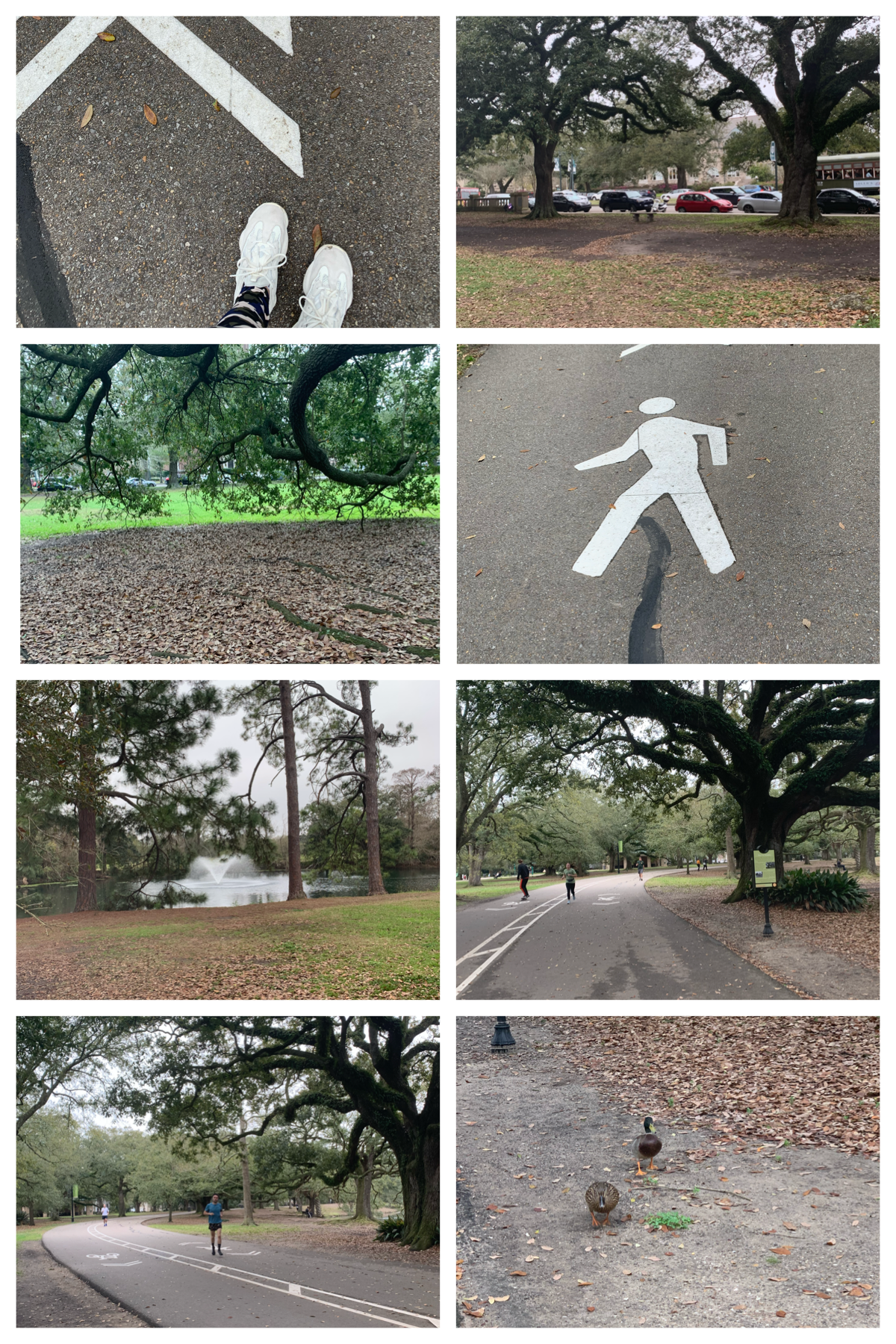Editor’s Note: 85% of the US population owns a smartphone (statista). This adds to the constant busyness of lives and makes it hard to unplug; it can also lead to unneeded stress. According to a 2019 study published in Scientific Reports, spending at least 120 minutes in nature a week is associated with good health and decreased stress (White et al). In other words, sometimes we are in need of a stroll through the park, so that’s what we’re giving you. The following is a collection of articles about different parks in New Orleans. The collection features historical articles, talking about the history of different parks; informative articles, featuring different events that can be attended at parks; and creative writing that draws inspiration from the park’s beauty. Our goal through curating this selection was to give anyone the ability to take a virtual stroll through the park. We hope this collection provides a much needed disconnect from the world, and inspires you creatively. This piece on Audubon Park was originally published on Sep 9, 2020.

Audubon Park
By: Julia Eisberg
Going to Audubon Park is an experience like no other. It is a place where one can go to get a break from the world. It is a place surrounded by trees, lakes, walking paths, zoos, people, and so much more. People usually say that New Orleans is the “Big Easy,” but going to Tulane, that is not always the case. There is pressure with school work and friends, so when I walked into Audubon Park, I felt like it was an escape. I was able to hear babies playing, people laughing and jogging around the track, and nature sounds serenading me. This was an experience so different from my life on campus, and I was able to feel at peace, which is very rare in my hectic life.
When going to Audubon Park, the first sound that stood out was the sound of laughter. This was apparent due to the loudness of it and how early it happened in the recording, occurring within the first 5 seconds. Upon entering the park, all of a sudden I heard this enormous laugh coming from a woman. The sound appeared to come from a distance and had a little mischief to the laugh that sounded a little bit like a witch. This laughter also cut through a loud engine roar. Even though laughter usually equates with happiness, this laughter symbolizes a break from the world that humans both need and crave. As scholars Aaron Michael Kerner and Jonathan L. Knapp points out, one form of laughter is the “de stress laughter,” and that is precisely what is going on here (7). This “de stress laughter” can be heard in the busy cars behind this woman; she is able to take a minute out of her day and just distress for a second, take a minute for herself and escape the crazy world we live in. It is also a critical factor that this laugh is occurring at Audubon Park. This park was first brought to the public as a place to be a “scenic retreat” (4). The exact definition of retreat is “withdrawing” (8). This highlights that the park is somewhere the founders wanted people to go to be able to withdraw from all of the stress that everyday life brings upon them. That is exactly what this woman is doing. She took a moment in the middle of her hectic day to withdraw for a second and do something to make her happy, laugh.
Another sound that stood out to me was the sound of the waterfalls, which was the first thing that I was able to hear as I walked closer to the track in the park. This sound happened around 35 seconds into the recording and continued throughout the rest of the recording. The sound was so peaceful; it sounded as if I was at a spa. It sounded like rain streaming down that one could hear from their window on a perfect rainy day. The sound of this water cut through another sound of nature, birds. Most people, of course, associate water with its literal meaning, which is wetness, but I think this waterfall symbolizes peace. The way the water trickles down is mesmerizing; I could honestly sit in front of it all day and listen to it and be at complete peace. As scholars Matilda Annerstedt, Johan Norman, Mattias Boman, Leif Mattsson, Patrik Grahn, and Peter Währbor explain, since the late 1900’s it has been proven that one of the fastest ways to relieve stress is nature (1). Of course, this pond of water and the birds that it cuts through are both natural elements. Being able to have this pond where the community can sit and listen to these nature sounds can provide a moment of distress and peace in this crazy world. Audubon Park was created for relaxing; as it states on Neworleans.com, “there is no better place in New Orleans for recreational fun and relaxation” (3). It is very special to be able to sit in such a beautiful space, listen to the sounds of water and other nature sounds like birds, become at peace, and destress in a park that is meant for relaxation. As Doctor Nikki Stamp states, “I can’t stress enough how important it is to destress” (9), clearly explaining this is a necessity, and luckily Audubon park is the perfect place to do distress and become at peace.
The last sound that was apparent to me was the sound of footsteps. These footsteps occurred around 15 seconds into the recording and lasted for about ⅓ of it. The footsteps were slow. They cut through the sound of leaves crunching, which was very loud and almost overtook the sound of the footsteps. Usually, when one thinks of footsteps, they think of walking, but I think that these footsteps also symbolize movement toward a better life or existence. As scholars Dargie and Grant explain, exercising has immense health benefits, including obesity prevention, heart disease prevention, and many others (5). Of course, exercise is a type of movement, which is important to incorporate into people’s everyday life. As Mayo Clinic says, “exercise can act as a stress reliever” (6), explaining that by doing even a small amount of movement (or exercise), like walking, one can take a break from the world and destress for a second. This park is the ultimate place to do so since it was created for people to be active and move! According to Audubon Nature Institute, they had exercise facilities there starting in the 1800s (2). Even if it is just a walk in the park for 15 minutes, exercise is such an important aspect of one’s day as it allows an escape from the world, the ability to destress, and the opportunity to obtain a little happiness in people’s crazy lives. Thus, Audubon Park has always been and will always be a great place for people to move, which is such an important aspect of one’s day.
Overall, Audubon Park has many great attributes to it, but through the sounds that I heard, I was able to understand what it essentially symbolizes — a break from the world. From the sound of footsteps and water to the sound of laughter, it is so apparent that this park is the perfect place to go to destress from the world. One is able to take a second out of their busy lives and have time alone, which is something that is rare in the world we live in today. Between social media, school work, jobs, and everything that life throws at people, one always has to be on. This park gives people a place where they can turn off for a second. They can go and play a round of golf, take a walk around the track, or even just admire the animals in the zoo. I think this is something that is so special and that New Orleans is lucky to have. I mean, it is the big easy after all, so a break sometimes is a necessity here.

Picture collage of Audubon Park By: Julia Eisberg
Bibliography:
2. “Audubon Nature Institute History.” Audubon Nature Institute.org, audubonnatureinstitute.org/audubon-nature-institute-history.
3. “Audubon Park.” Visit New Orleans, www.neworleans.com/listing/audubon-park/32167/.
4. “Audubon Park History.” Audubonnatureinstitute.org, audubonnatureinstitute.org/audubon-park/audubon-park-histor
5. Dargie, Henry J., and S. Grant. “Exercise.” BMJ: British Medical Journal, vol. 303, no. 6807, 1991, pp. 910–912. JSTOR, www.jstor.org/stable/29713290. Accessed 18 Feb. 2020.
6. “Exercise and Stress: Get Moving to Manage Stress.” Mayo Clinic, Mayo Foundation for Medical Education and Research, 8 Mar. 2018, www.mayoclinic.org/healthy-lifestyle/stress-management/in-depth/exercise-and-stress/art-20044469.
7. “Laughter: Belly–Aching Laughter.” Extreme Cinema: Affective Strategies in Transnational Media, by Aaron Michael Kerner and Jonathan L. Knapp, Edinburgh University Press, Edinburgh, 2016, pp. 72–100. JSTOR, www.jstor.org/stable/10.3366/j.ctt1bh2k3x.8. Accessed 18 Feb. 2020.
8. “Retreat.” Dictionary.com, Dictionary.com, www.dictionary.com/browse/retreat.
9. Stamp, Nikki. “I Can’t Stress Enough How Important It Is To De-Stress.” HuffPost Australia, HuffPost Australia, 17 Nov. 2016, www.huffingtonpost.com.au/dr-nikki-stamp/i-cant-stress-enough-how-important-it-is-to-de-stress_a_21484614/.
 NOLAbeings
Multimedia artist Claire Bangser created NOLAbeings as a portrait-based story project that marries...
NOLAbeings
Multimedia artist Claire Bangser created NOLAbeings as a portrait-based story project that marries...
 Data corner: Adobe Suite (create a PDF, social media graphic, presentation, edit a photo and video
Data corner is where you go to work with analytics and top tech skills. It takes on everything from PERL and SQL to Canva and Sprout Social.
Data corner: Adobe Suite (create a PDF, social media graphic, presentation, edit a photo and video
Data corner is where you go to work with analytics and top tech skills. It takes on everything from PERL and SQL to Canva and Sprout Social.
